Introduction
This Insight will discuss the Brazilian National Socialist Black Metal (NSBM) scene and its role in propagating extremist ideologies, with a focus on transnational connections. Drawing on a dataset of over 100 identified Brazilian bands (active between 1993-2024) and more than 1,000 songs, this study employs network analysis and Natural Language Processing (NLP) to understand how these groups disseminate narratives of hate and reinforce global neo-Nazi networks.

Figure 1. Album covers from Brazilian NSBM bands showcasing themes of hate, Nazi symbolism, and far-right propaganda.
National Socialist Black Metal (NSBM) is a subgenre of black metal that merges neo-Nazism and far-right ideologies with the cultural themes of black metal, such as paganism and mythology. Emerging in the 1990s, NSBM serves as an ideological tool for neo-Nazi and white supremacist groups, often incorporating ethnoracial symbolism, esoteric fascism, and Holocaust glorification in its lyrics and visuals. While its overtly racist and political nature has pushed it to the fringes of the black metal community, NSBM underscores ongoing tensions between artistic freedom and the exploitation of metal imagery by extremist ideologies. However, it is crucial to distinguish black metal as a whole from NSBM, as the broader black metal scene encompasses diverse themes, ideologies, and artistic expressions that are not necessarily aligned with far-right extremism.
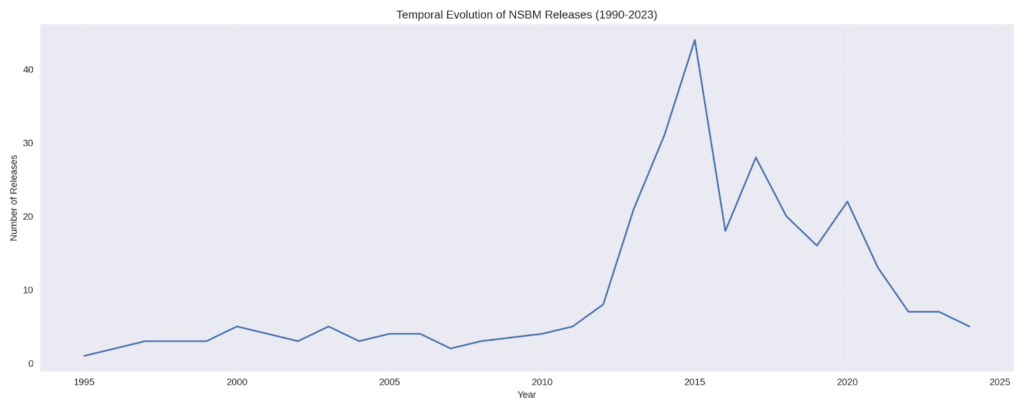
Figure 2. The temporal evolution of NSBM releases in Brazil.
The temporal evolution of NSBM releases in Brazil, as illustrated in the above graph, aligns with socio-political shifts from 2010 onwards during a global resurgence of far-right ideologies. This growth reflects how neo-Nazi elements capitalised on the political climate to expand their influence. The steady production of NSBM content, despite counter-extremism efforts, highlights the resilience and adaptability of these networks, demonstrating the transnational and ideological dimensions of Brazil’s neo-Nazism within global far-right trends.
Methodology
This study analysed 108 Brazilian NSBM bands, and more than 1,000 song titles, selected based on explicit criteria such as: self-identification with NSBM, Nazi elements in album art or titles, and recommendations from fan forums. Supported by metadata and transcriptions, NLP identified themes of racial purity, antisemitism, anti-Zionism, and neo-paganism. The research also mapped transnational collaborations, particularly through split albums, revealing ideological and logistical connections across borders, offering a comprehensive understanding of NSBM’s cultural and ideological influence on a global scale.1
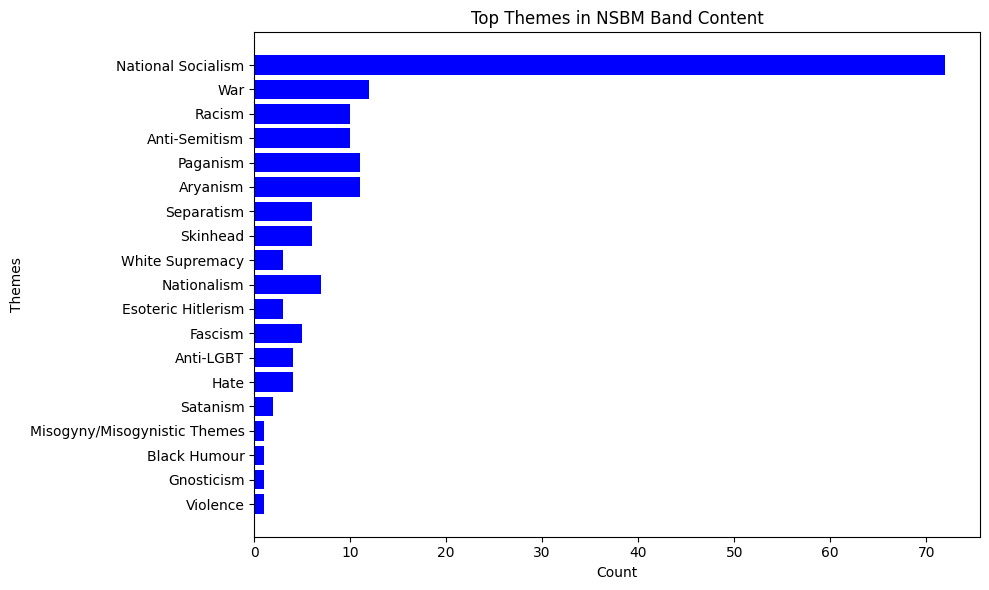
Figure 3. The chart displays the most prominent themes in NSBM band content, highlighting the dominance of National Socialism alongside other extremist ideologies. The data for the chart was generated using topic modelling applied to song titles, graphic materials, and other related elements.
The Ideological Framework in Brazilian NSBM Song Titles
The song titles produced by Brazilian NSBM bands provide a revealing lens into the ideological framework and propaganda strategies of this extremist subculture. They are not merely titles but calculated ideological statements designed to shock, provoke, and resonate with a target audience that shares neo-Nazi values. These titles frequently reference core tenets of white supremacy, antisemitism, and the glorification of violence, leveraging language as a tool for cultural radicalisation.
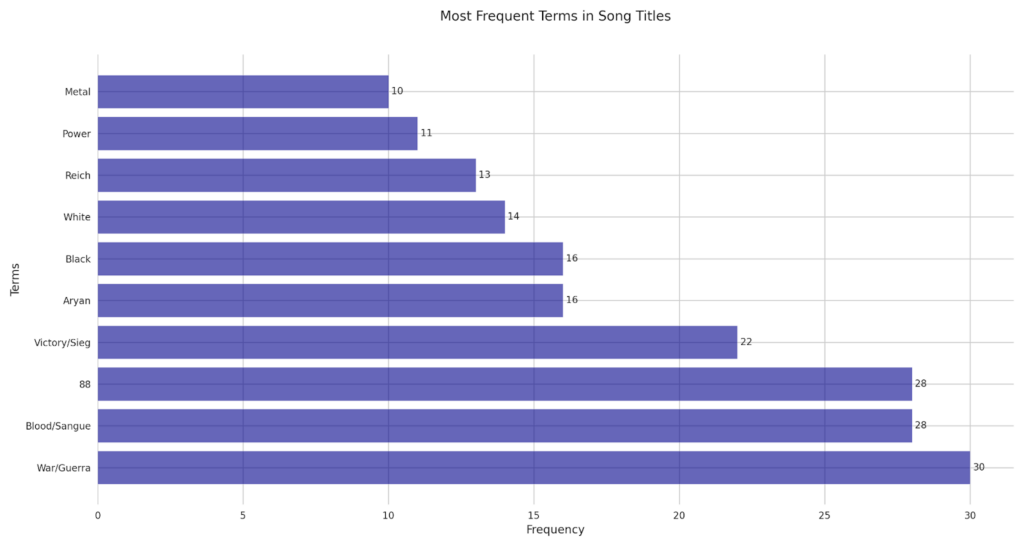
Figure 4. The most frequently used words in the titles of Brazilian NSBM songs.
The most frequently used words in the titles of Brazilian NSBM songs, as illustrated in the above graph, include “War/Guerra,” “Blood/Sangue,” “88,” “Victory/Sieg,” and “Aryan,” reflecting the genre’s ideological foundations and extremist narratives. These terms emphasise themes of racial supremacy, militaristic hierarchies, and glorified violence, aligning with neo-Nazi propaganda. Titles such as “Aryan Blood – Ancient Empire” and “88 Shots in Your Race” exemplify the explicit use of language to provoke and indoctrinate, further solidifying NSBM’s connection to white supremacist and antisemitic ideologies. By embedding these narratives in their cultural products, Brazilian NSBM bands leverage songs as tools for recruitment and radicalisation, targeting both national and global audiences.
Transnational Collaborations in the Brazilian NSBM Scene
The transnational dimension of Brazil’s NSBM scene is pivotal in understanding its role within the global neo-Nazi network. Brazilian NSBM bands frequently collaborate with groups from Europe and North America, forging ideological and operational links that amplify their extremist messaging and enhance their global reach. These collaborations often manifest through split albums, shared performances, and mutual promotional efforts, which serve to reinforce a unified narrative of hate and white supremacy across national borders.
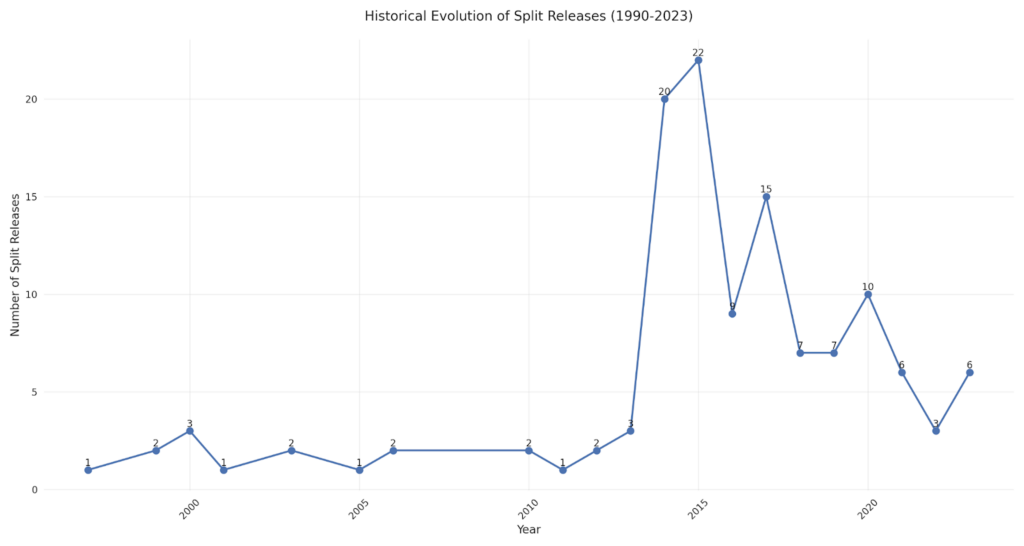
Figure 5. The evolution of split albums releases in the Brazilian NSBM scene from 1990 to 2024.
The chart showcases the evolution of split album releases in the Brazilian NSBM scene from 1990 to 2024, emphasising their role as networking tools for fostering international connections and cultural exchanges. Activity surged in the early 2010s and peaked in 2015 with over 20 releases, aligning with the rise of extremist forums like Iron March, which fostered cross-border collaboration. Although activity declined after 2017, the consistent output in recent years highlights the ongoing significance of splits in sustaining transnational collaborations.
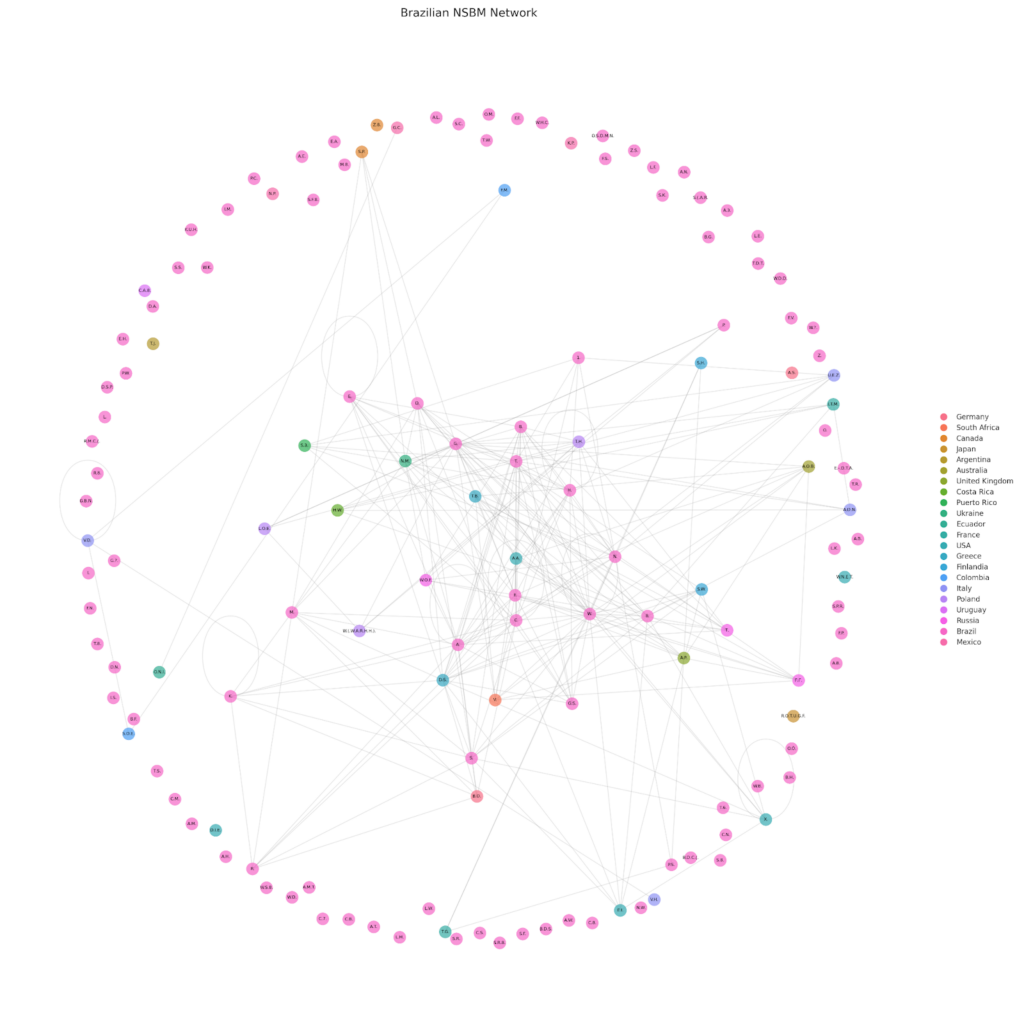
Figure 6. This visualisation depicts the NSBM network in Brazil, showing transnational connections.
This network visualisation highlights the influence of international NSBM bands on the Brazilian scene, focusing on the transnational connections that shape its structure. With 108 nodes (bands) and 229 edges (collaborations), the graph illustrates how Brazilian bands are embedded in a global network facilitated by splits, collaborations, and shared ideological narratives. Nodes are colour-coded by country, with international bands prominently influencing the central Brazilian network.
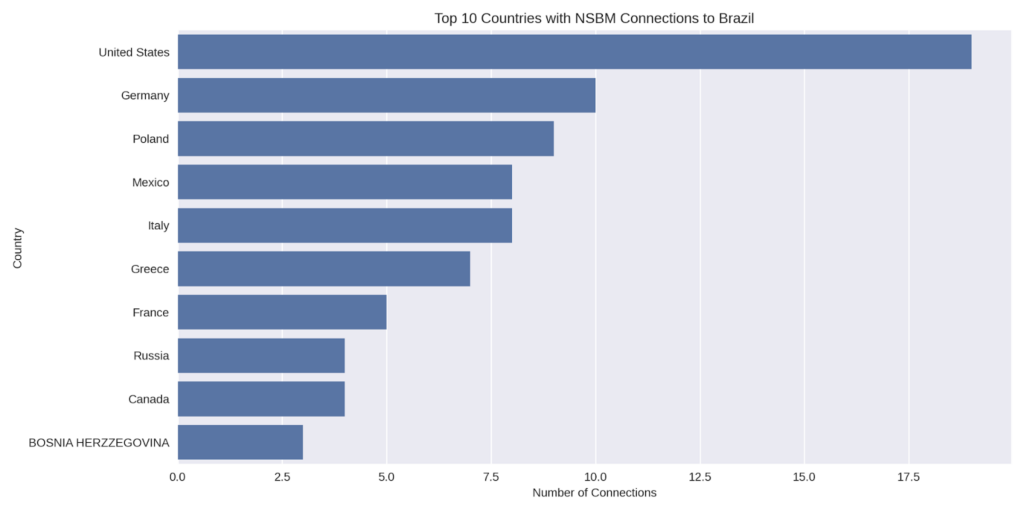
Figure 7. The chart shows the top 10 countries with NSBM connections to Brazil, led by the United States (22 bands), Germany (10), and Poland (9), highlighting the network’s transnational reach.
The Brazilian NSBM scene exhibits strong transnational connections, collaborating with 111 distinct bands from 35 countries through the production of 140 split albums, which serve as ideological and logistical bridges. The United States, Germany, and Poland emerge as critical hubs, facilitating the exchange of ideological content and musical projects that amplify neo-Nazi narratives globally. The United States leads in influence, while German and Polish groups frequently participate in split albums and compilations that reinforce white supremacist themes. Connections also extend to Mexico, Italy, Greece, and beyond, with Latin American and European bands collaborating to bridge regional and global far-right movements. South America and Africa also feature in these networks, demonstrating how NSBM ideology transcends geographic boundaries through releases like “Iberian Union” and “Hammerstorm Vol. 1.” These collaborations highlight NSBM’s ability to exploit cultural products to spread extremist propaganda, emphasising the need for international efforts to monitor and disrupt these dangerous networks.
Global Events, Key Players, and Underground Influence in the Brazilian NSBM Scene
Brazilian NSBM bands participate in international events, including festivals and underground concerts, to consolidate ideological and networking ties. Performances in Europe or hosting international acts in São Paulo’s metal scene facilitate exchanges of resources, strategies, and propaganda. Global NSBM festivals like Asgardsrei in Ukraine, Steelfest in Finland, and Hot Shower in Italy serve as platforms for extremist narratives, with Brazilian bands like E. reinforcing transnational connections through joint releases and digital platforms.
The Brazilian NSBM band E. has demonstrated a strategic and consistent approach to internationalisation over a span of 25 years (1997–2022), securing its position as a prominent entity within the global NSBM scene. Its transnational connections can be categorised into three distinct phases. During the early phase (1997–1999), E. made its initial foray into international collaborations with the release of the split cassette French (1999), establishing ties with the French NSBM community. In the expansion phase (2005–2011), the band broadened its partnerships to include bands from Germany, Finland, and the Czech Republic, transitioning to more professional formats such as vinyl and CDs. Finally, in the contemporary phase (2016–2022), E. solidified its international influence with collaborations like the Italian split album U. F. (2016) and participation in the Ukrainian Asgardsrei festival (2022). This evolution reflects a sophisticated networking strategy supported by key European labels, while adapting to market shifts by embracing diverse distribution formats. E.’s trajectory highlights its enduring relevance in the NSBM scene, sustained by its participation in international festivals, collaborations across six countries, and integration within significant European networks.
In addition to its musical output, E. maintains a pivotal role in the Brazilian NSBM scene through its record label, which is responsible for producing a significant number of splits and releases within Brazil. The band also operates a dedicated venue for underground events, further cementing its influence by providing a physical space for networking, performances, and the dissemination of extremist content.
In Brazil, NSBM small festivals and gatherings have been directly linked to criminal activities, including incitement to discrimination and planning acts of violence. Investigations by the Public Prosecutor’s Office and the CyberGAECO task force uncovered events where bands performed in front of Nazi flags, spreading hate speech and extremist ideologies. Operation Overlord, launched in 2024, revealed that some of these events served as recruitment and coordination spaces for neo-Nazi groups, with several individuals arrested for their involvement in violent acts, including a homicide.
A festival set to take place this year in Buenos Aires, Argentina, highlights the growing transnational connections of the NSBM scene, with Brazilian bands already confirmed to perform. Promising a highly exclusive experience, the festival operates in secrecy, with an undisclosed venue and strict access protocols, including prepaid tickets and private transportation for attendees. While organisers claim the event is apolitical, the inclusion of NSBM bands and its rhetoric against ’political correctness’ reveal its ideological undertones. This event demonstrates how the NSBM network extends its reach across borders, offering a platform for extremist narratives under the guise of underground Black Metal.
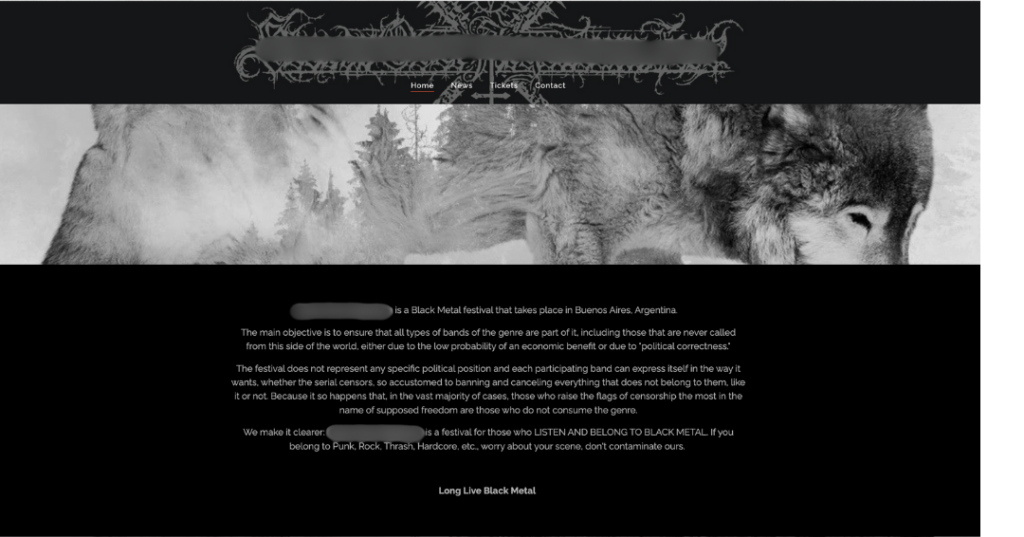
Figure 8. Screenshot of a website promoting a Black Metal festival in Buenos Aires, Argentina. The text emphasizes the inclusion of all bands within the genre while rejecting censorship and specific political stances.
The Brazilian NSBM network demonstrates significant overlapping participation, with some members active in up to twenty bands simultaneously, often adopting different pseudonyms to obscure their identities and create an inflated perception of the movement’s size and diversity despite its limited unique participants. This practice not only masks the small number of individuals involved but also enhances the network’s ability to appear larger and more influential than it is. With active members involved in multiple bands — some participating in up to 20 different bands — this interconnected structure amplifies the reach and visibility of NSBM content, enabling a small group to produce a disproportionate amount of material that facilitates propaganda, recruitment, and radicalisation efforts.
Decentralised Networks and Digital Platforms: Sustaining the NSBM Scene
The Brazilian NSBM scene relies on decentralised networks for the production and distribution of its content, with independent labels accounting for the majority of releases. This grassroots model enables the scene to evade regulation and maintain widespread accessibility. Prominent labels play a significant role in professionalising the network, while smaller labels and unidentified producers ensure a steady output.

Figure 9. An NSBM band with a verified account on Spotify.
Digital platforms like YouTube Music, Spotify, and Telegram further amplify NSBM’s global reach, with some bands, such as W.B., even maintaining verified accounts. These platforms allow extremist content to circulate under the guise of niche subcultures, using playlists, recommendations, and anonymity to connect with broader audiences.
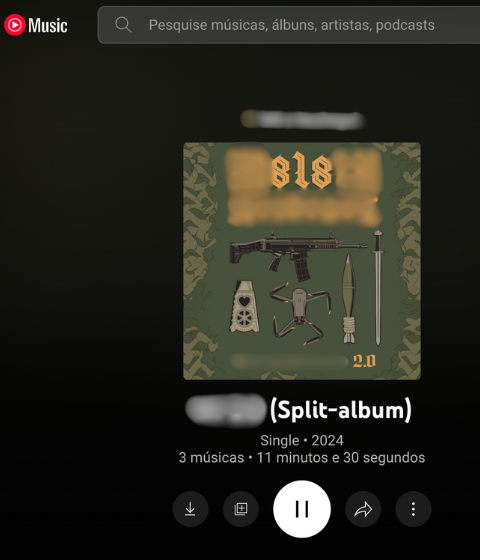
Figure 10. Screenshot from YouTube Music featuring an NSBM Brazilian band’s 2024 split album with military-themed imagery. Notably, the cover includes a drone resembling a swastika, suggesting extremist symbolism.
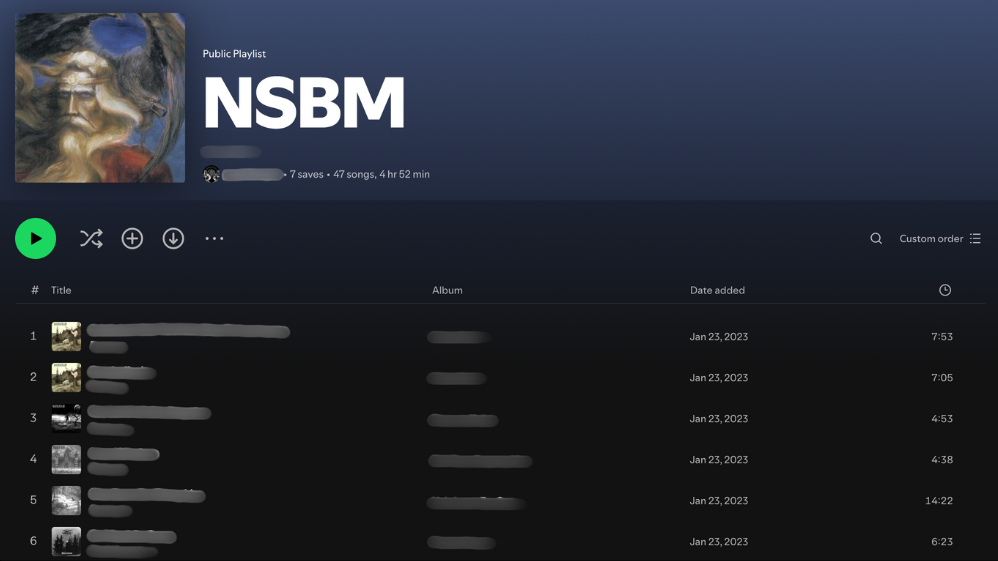
Figure 11. Screenshot of a public Spotify playlist titled “NSBM”, featuring 47 songs. The playlist’s explicit reference to National Socialist Black Metal highlights concerns about the accessibility and dissemination of extremist content on mainstream platforms.
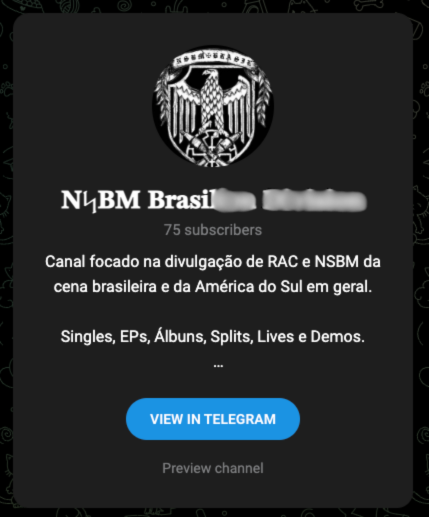
Figure 12. Telegram channel promoting RAC and NSBM content from Brazil and South America, featuring singles, albums, splits, live recordings, and demos.
Financially, the scene sustains itself through the sale of Nazi-themed records, merchandise, and festivals, generating revenue while propagating extremist ideologies. Collectible vinyl records and wearable propaganda, like T-shirts glorifying figures such as the Christchurch shooter Brenton Tarrant, are key revenue streams. Collectible vinyl records and wearable propaganda, like T-shirts glorifying figures such as the Christchurch shooter Brenton Tarrant, are key revenue streams. Telegram channels further support this ecosystem by providing direct access to music and merchandise, leveraging encryption to evade takedowns. Additionally, Telegram functions as a key marketplace, where sellers use its visual and social networking features to promote and distribute extremist materials discreetly. Together, these decentralised networks and platforms highlight the adaptability of NSBM and the challenges in monitoring and countering its influence.

Figure 13. These images show posts from a Telegram channel specialising in the sale of extremist music materials, including T-shirts, flags, and albums from bands associated with supremacist ideologies. The group markets items in Brazil, highlighting exclusive editions and products featuring extremist symbolism.
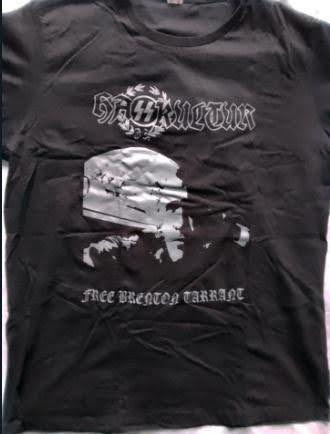
Figure 14. T-shirt promoting ‘Free Brenton Tarrant,’ glorifying the perpetrator of the Christchurch attack, highlighting the intersection of extremist propaganda and merchandise.
Global Impacts of NSBM on Radicalisation
The influence of NSBM in radicalisation was starkly highlighted in the recent Antioch High School shooting in Nashville, where the 17-year-old perpetrator posted a photo of himself on social media before the attack, wearing a shirt of an NSBM band. This tragic event demonstrates how NSBM’s ideological messaging, spread through music and associated visual culture, can resonate with disillusioned individuals and potentially reinforce extremist beliefs.
The shooter’s manifesto, which included references to alt-right extremist views, glorification of prior school shootings, and a list of cultural influences such as extremist music, video games, and online communities, highlights the broader framework of radicalisation. These influences, combined with the shooter’s explicit statement that they “mentally prepared for murder,” underscore the role of cultural and digital environments in fostering extremist ideologies and normalising violence.
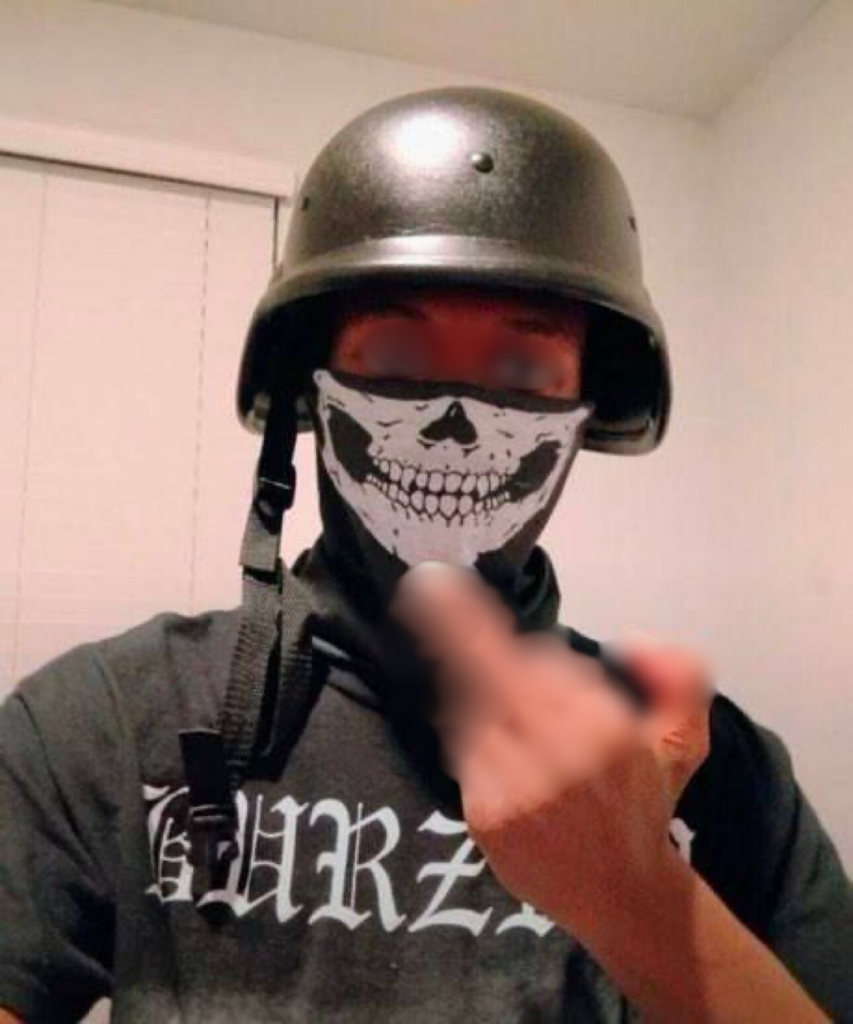
Figure 15. Image of the Antioch High School shooter wearing an NSBM band shirt underscores the influence of extremist subcultures in the context of the attack.
Conclusion
The NSBM scene functions as both a cultural platform and a financial engine for extremist movements. It generates revenue through merchandise sales, including Nazi-themed records, clothing, and collectables, while leveraging anonymity to evade regulation. Often described as marginal, it operates deliberately in the shadows to minimise scrutiny, using its global networks and digital platforms, such as Telegram, Spotify, and Youtube Music, to sustain its expansion.
To effectively combat its influence, digital platforms must adopt stricter content moderation and transparency measures. AI-driven tools tailored for multilingual content detection, particularly for underrepresented languages like Portuguese, should be prioritised to identify and disrupt extremist materials effectively. In addition, targeting financial mechanisms — such as payment gateways, cryptocurrencies, and underground transactions — is essential to cutting off key revenue streams. Enhanced collaboration between digital platforms, financial institutions, and law enforcement agencies will be crucial in addressing these challenges.
The raw data gathered during this research, provided by Stop Hate Brasil to the URCOD (Unit for Repression of Cyber Hate Crimes) of the Federal Police, led to concrete enforcement actions. In December 2024, the Federal Police launched Operation Trilha do Ódio in the State of Paraná, targeting the sale of Nazi-themed black metal albums and Nazi memorabilia. The operation resulted in the arrest of a Cuban national residing in Brazil who managed a transnational distribution network. This case highlights the global interconnectedness and logistical complexity of such activities, underscoring the need for coordinated international efforts to combat them.
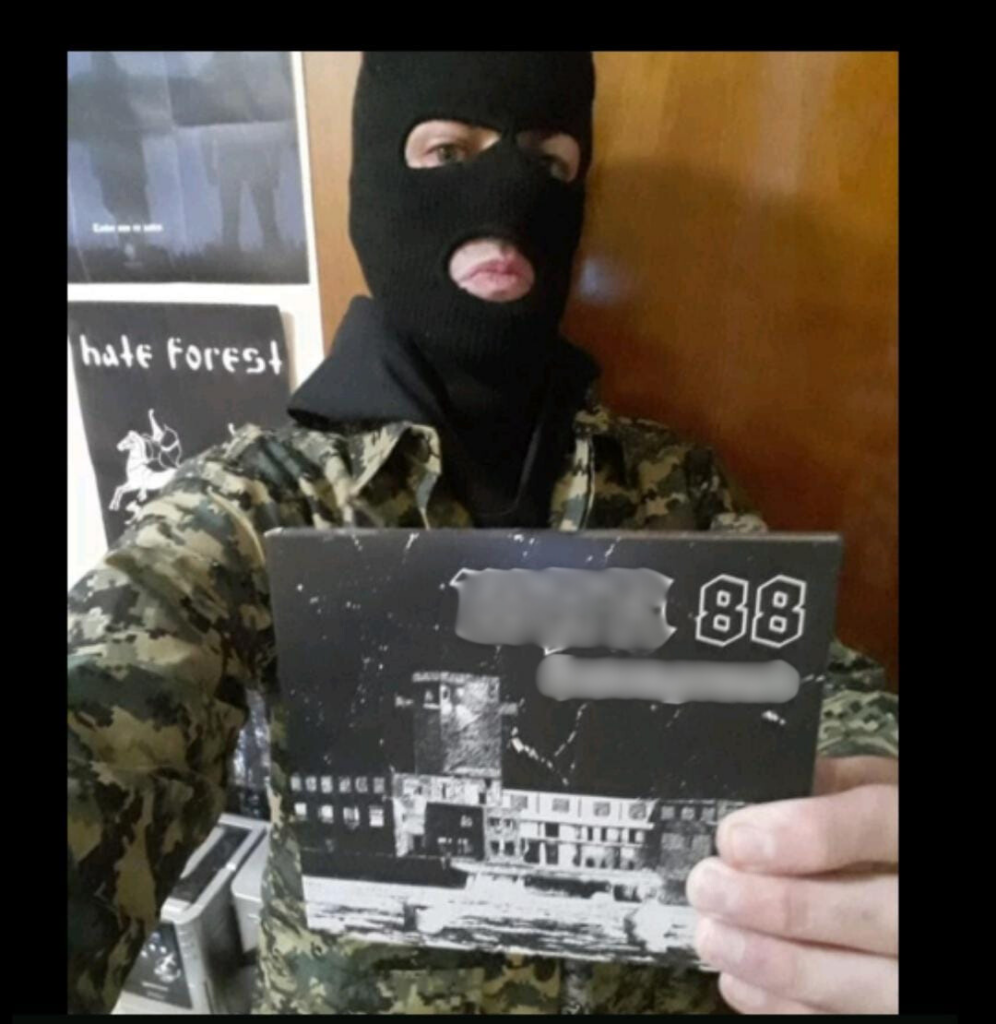
Figure 16. Image of the Cuban national arrested in Paraná during ‘Operation Trilhas do Ódio,’ holding NSBM propaganda material while dressed in paramilitary attire, highlighting the role of individuals in disseminating extremist content.
- A split album is a collaborative music release featuring tracks from two or more artists or bands, often sharing equal billing. Common in genres like punk, metal, and indie, each artist contributes a portion of the songs, typically divided by sides on vinyl or sections on a CD, allowing them to share audiences and promote their work jointly.
Ricardo Cabral Penteado is a Ph.D. candidate in Computational Linguistics at the University of São Paulo (USP). He specialises in deep learning and natural language processing (NLP), focusing on the intersection of violent extremism and technology within the Brazilian and Latin American context. Ricardo is a 2024-2025 GNET Fellow.
This research, supported by Stop Hate Brasil and Michele Prado, benefitted from their expertise in monitoring hate speech and extremist movements, providing vital data and analysis of the Brazilian NSBM scene. Their collaboration highlights the value of joint efforts in tackling hate-driven subcultures. Moving forward, international cooperation, the disruption of financial networks, and the adoption of culturally inclusive AI moderation tools will be vital to effectively dismantle NSBM networks and mitigating their global influence.
